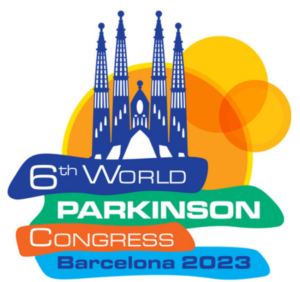Innovative Research, Inclusive Trials, and New Funding Drives Hope for People with Parkinson’s Disease
PhotoPharmics Secures $16 Million Investment Led by Kickstart to Fund Pivotal Clinical Trial for FDA Market Authorization
PhotoPharmics, an innovator in Parkinson’s disease research and treatment, today announced the successful first close of a $16 million investment round. The investment round, led by Kickstart Fund, a venture capital firm based in Salt Lake City, marks a significant milestone in PhotoPharmics’ mission to revolutionize Parkinson’s disease treatment.
The primary purpose of this investment round is to fund a pivotal clinical trial aimed at obtaining FDA market authorization for Celeste PhotoPharmics’ FDA breakthrough therapeutic device for Parkinson’s disease. In research to this point, the innovative therapy has shown remarkable potential in improving overall function and quality of life for people with Parkinson’s disease.
Kent Savage, CEO of PhotoPharmics, expressed his gratitude for the support of investors, stating, “This investment is a pivotal moment in our journey to transform the treatment landscape for Parkinson’s disease. With this funding, we are positioned to advance our research and bring hope to the millions of individuals living with Parkinson’s.”
Kickstart’s expertise in supporting innovative ventures played a key role in leading this investment round. Their commitment to PhotoPharmics reflects their confidence in the potential of Celeste.
The Light for PD trial meets rigorous FDA and world-wide standards and will assess the safety and efficacy of Celeste, a non-invasive treatment for Parkinson’s disease. Celest is designed to improve both motor and non-motor function, offering a comprehensive non-pharmaceutical approach to Parkinson’s care.
Trial Description
—————
The Light for PD trial will be a landmark study in the field of Parkinson’s disease treatment. This pivotal trial is designed to demonstrate Celeste’s potential to significantly enhance the lives of patients by targeting a range of symptoms, including motor dysfunction, sleep disturbances, fatigue, mood fluctuations, cognitive impairments, reduced activity levels, and disruptions in circadian rhythm.
What sets this trial apart is its inclusive and accessible virtual design. Participants will have the opportunity to engage from the comfort of their own homes, eliminating geographical barriers and ensuring a diverse and representative population. Celeste is used passively in the home and clinical visits will be conducted via Zoom videoconferencing.
The investor’s commitments underscore the growing recognition of the potential of Celeste to improve the lives of Parkinson’s patients and reaffirms PhotoPharmics’ commitment to pushing the boundaries of innovation in the field of neurodegenerative diseases.
About PhotoPharmics
—————
PhotoPharmics is a privately held, clinical-stage medical device company developing next-generation treatments for treating neurodegenerative disorders through the eyes. Company founders have 30+ years of research and experience in this field. They previously developed specialized light solutions now widely used to regulate circadian rhythms in seasonal affective disorder, sleep disorders, anxiety, and depression (acquired by Philips-Respironics in 2007).
Drawing from research and recent trials, PhotoPharmics is developing applications of specialized phototherapy across several neurodegenerative diseases. The company aims to make a clinically meaningful difference in patients’ lives by delivering safe and effective non-invasive treatments. Investor inquiries are welcomed. Learn more at www.photopharmics.com.
###

 PhotoPharmics, a leading innovator in Parkinson’s disease, today announced that it will be presenting its pivotal trial design at the
PhotoPharmics, a leading innovator in Parkinson’s disease, today announced that it will be presenting its pivotal trial design at the 





